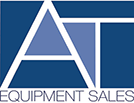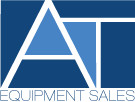Post-COVID Learning Spaces: The New Normal
Educational institutions are hard at work developing plans for the 2020-2021 school year. Many districts are facing tight restrictions from local and state governments as well as CDC recommendations. While some will return to the classroom as normal in August, others must adapt their spaces and routines to comply with these regulations.
Classroom vs. At-Home Learning
When planning for the year ahead, schools have a choice. They can return to traditional in-person classrooms or incorporate remote learning. One option is the creation of staggered schedules, bringing groups of students back into the classroom on certain days. The rest of students participate remotely. This limits the number of students in the classroom on any given day.
Another option is reintroducing students to a classroom setting in waves, rather than having all return to school at the start of the year.
Both options provide logistical issues and require adequate planning. Schools must ensure technology is in place and that families have the support necessary to facilitate successful remote learning.
Classroom Reconfiguration
The trend in schools over recent years has been to develop learning spaces that promote flexibility, mobility, and above all, collaboration among students. Because of this, many classrooms have opted with furniture that lessens the distance between students. As these setups promote movement and shared spaces, they are not ideal in a post-COVID world.
To comply with regulations and keep student and staff safety as the main priority, many classrooms and other school spaces must be reconfigured or redesigned.
When possible, furniture should be placed in a way that maintains the recommended 6 feet of separation between people. Mobile furniture is a great solution, as the set-up can be adjusted over time when restrictions ease.
In areas where this 6-foot rule is not achievable, it is important to install other preventative structures. These can include partitions to separate individuals or sneeze guards. These limit contact while still maintaining a collaborative environment.
Additional Preventative Measures
In addition to classroom configuration, additional measures must be taken to ensure the safety of everyone in the new educational environment.
- Establish new protocols and procedures for staff and maintain constant and clear communication of these
- Develop standardized cleaning practices, and provide PPT (personal protective equipment) to students and staff if is determined necessary, as well as training on proper use.
- Invest in classroom materials and furniture that are easily cleaned and sanitized and provide sanitation stations to make supplies easily accessible.
- Consider hosting activities in larger school spaces, such as cafeterias or gymnasiums, that allow for more distance between individuals
- Create a dedicated Pandemic Response Team to monitor the changing guidelines/regulations from the CDC and local governments and develop and implement procedures to remain in compliance.
Partners in Education
The entire world has been forced to adapt over the past few months, and educational institutions are not immune. Above all, the safety of students and staff remains the top priority. ATE is proud to partner with manufacturers who are constantly working to evolve their offerings to support this goal. This way, learning continues as safely as possible. Contact us today for more information on these products and advice on creating a safe post-COVID school environment.


